Whether you’re an avid gardener or a plant newbie, it’s essential to consider what plants are appropriate for growing under your trees. After all, you want to make sure that your trees and plants do more than co-exist—they should thrive!

Jump to:
- What You Need to Know Before You Plant Under Trees
- The Plants You Should Totally Plant Under Your Trees
- 1. Hostas
- 2. Lilies
- 3. Wild Ginger
- 4. Merry Bells aka Bellwort
- 5. Shooting Star
- 6. Crocus
- 7. Periwinkle Plant
- 8. Ferns
- 9. Wild Violets
- 10. Ajuga Plants
- 11. Impatiens
- 12. Primrose
- 13. Siberian Squill
- 14. Lamium
- 15. Abelia
- 16. Cranesbill
- 17. Tiarella
- 18. Heucherella
- 19. Liriope
- 20. Lenten Rose
- 21. Brunnera
- 22. Pachysandra
- 23. Barren Strawberry
- 24. Stonecrop
- 25. Yarrow
- FAQs
- Final Thoughts
What You Need to Know Before You Plant Under Trees
There is a laundry list of items you need to consider before moving forward with your planting plans. Follow these simple steps, and you’re sure to have a beautiful, lush garden in no time!
Trim Your Trees
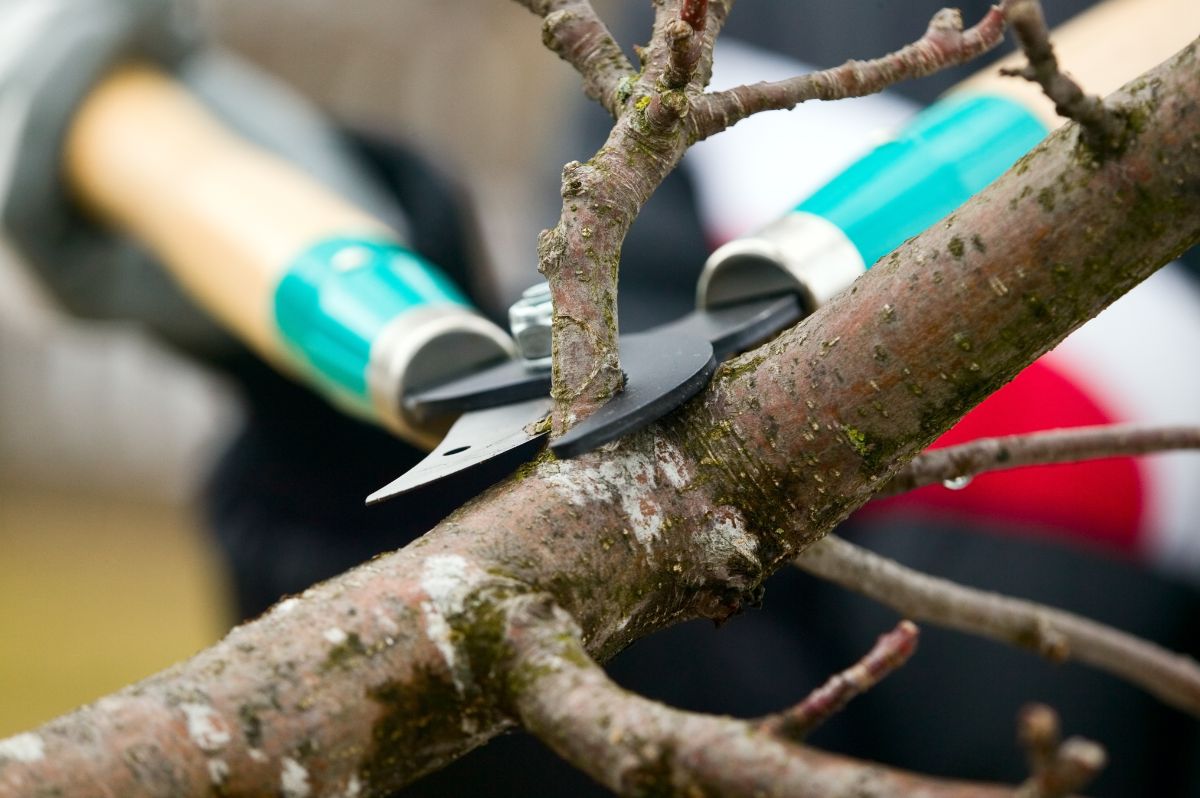
It might sound obvious, but it’s an easy step to skip when you’re gung ho about getting the job done. You’ll want to clear away any dead branches and trim the lower ones to allow your under-tree plants access to a bit of sunlight. Even if your plants supposedly shade tolerant, they’ll still need at least a little sunlight to survive.
Dig Your Holes Carefully
Because you’ll be planting under the tree near its root system, you need to be careful when digging holes as you’ll want to avoid stabbing the roots. Bear in mind that each plant will need its own spot, so you’ll need to plan accordingly. As you place each plant in its new home, you can fill the holes with composted organic matter.
If you hit a root while digging, immediately fill it in. Damaged roots can weaken your tree and even lead to death, depending on severe the damage is.
If you happen to hit a root while digging, immediately fill it in. Damaged roots can weaken your tree and even lead to death, depending on severe the damage was.
Water Your Plants Diligently
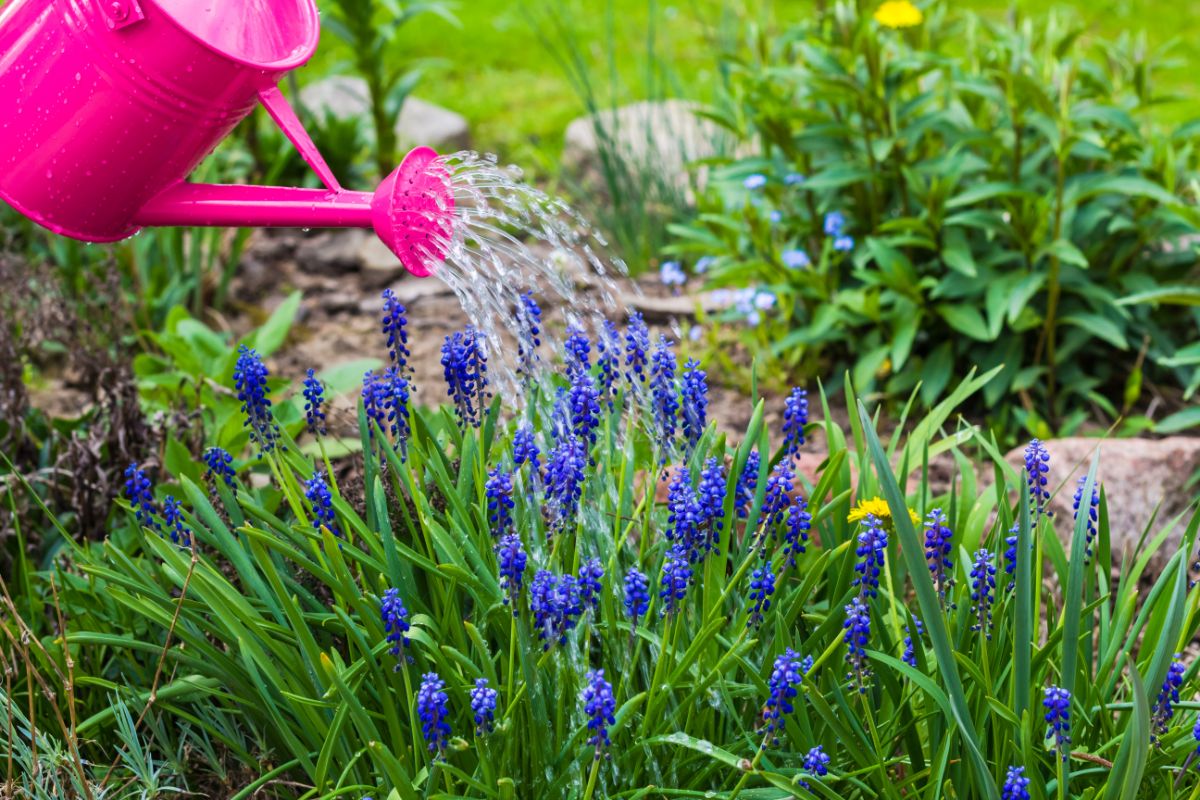
Because your newly planted flowers and other greeneries won’t have established roots, they may find it difficult to get water. The best thing you can do to encourage growth is to be diligent in watering them—unless it’s raining.
Grow Plants According to Your Planting Zone
While certain plants are more suitable for being grown under a tree, your planting zone is another critical factor. The area you live in impacts the hardiness of the types of plants you can choose to grow. If you’re unsure which plants grow well in your region, you may want to consult a reputable local nursery to gain valuable insight.
When Choosing Plants, Think Small—Literally
You don’t want to choose large, hardy plants that will overtake your garden and detrimentally affect your trees’ growth. Instead, opt for smaller, low-growing plants that will grow in a way that is harmonious as it co-exists with your already established trees.
The Plants You Should Totally Plant Under Your Trees
Now that you’ve got the basics down, it’s time to choose the flora that will grow the best and add aesthetic to your under-the-tree garden. So, without further adieu, here are 25 plants to grow under trees…
1. Hostas
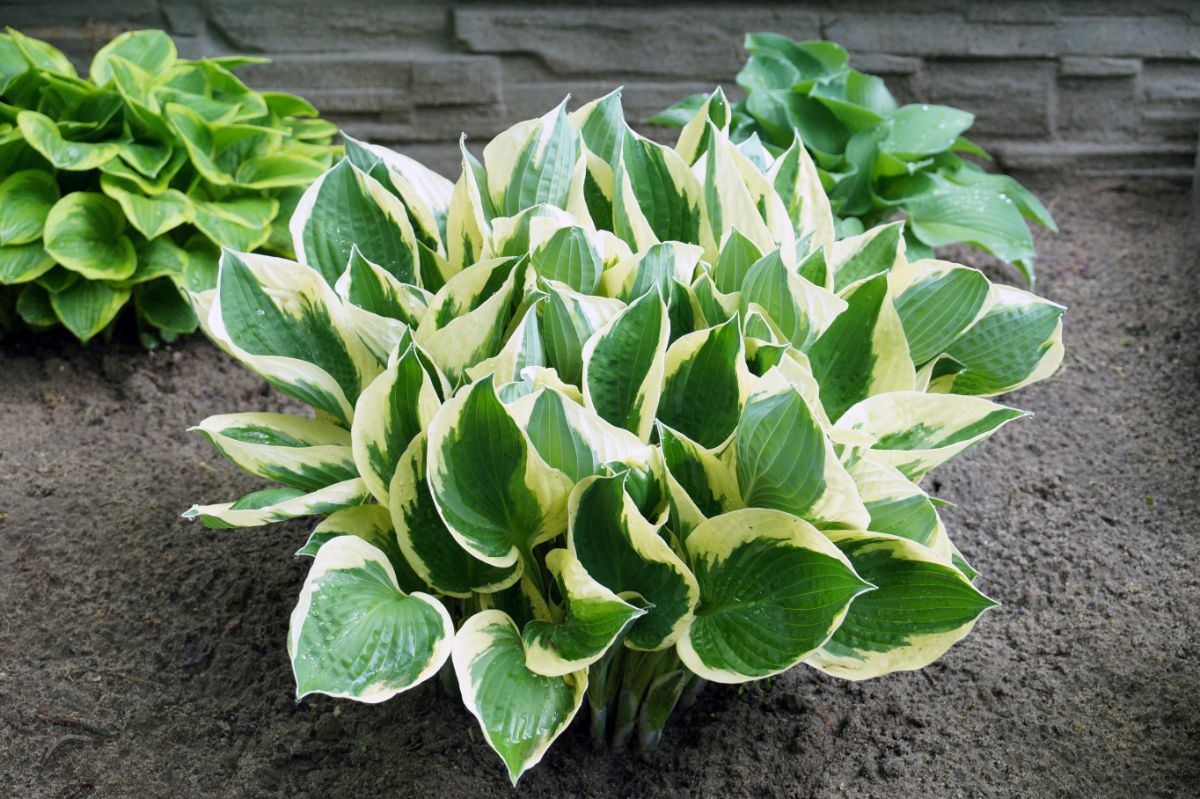
| Scientific Name: | Hosta |
| Plant Type: | Herbaceous Perennial |
| Sun Exposure: | Partial sun, shade |
Hostas, also known as plantain lilies, are a perennial favorite amongst gardeners. They thrive in shady locations where other, less hardy plants die. They’re one of the easiest plants to grow in terms of care and propagation. Smaller varieties of the hostas plant grow faster than larger varieties, which could take up to seven years to achieve their mature size. They bloom in the summertime, and their flowers are white, lavender, or pink.
As easy-to-care-for as these beautiful plants are, be aware that hostas are toxic to dogs, cats, and horses.
2. Lilies
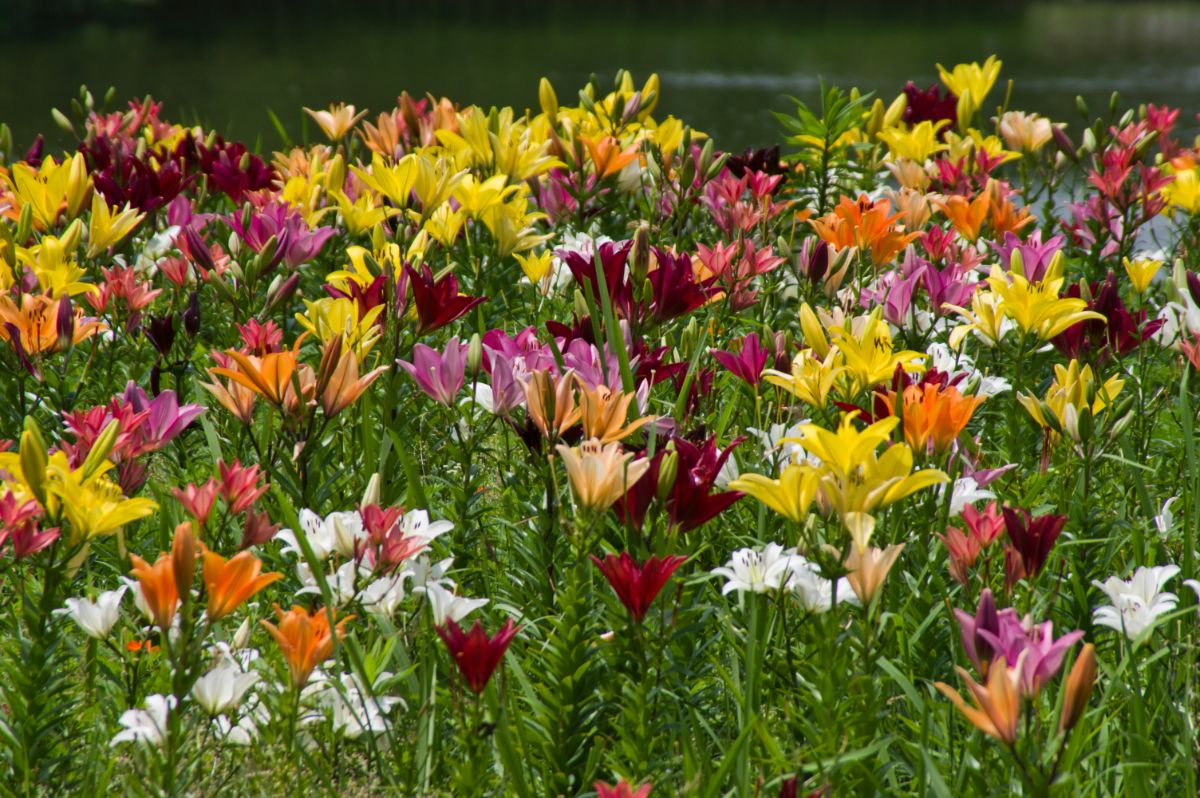
| Scientific Name: | Lilium |
| Plant Type: | Perennial |
| Sun Exposure: | Full sun, partial shade |
Lilies come in many shapes and colors, including pink, orange, and yellow. Lilies need good drainage to grow, so you’ll need a garden tool on hand to loosen the soil. Unlike hostas, lilies love the sun, and as they grow, their stems will lean towards where there’s the most sunlight! They are still an excellent choice for planting under your tree, particularly if it doesn’t offer much shade. Lilies are perennials and hardy enough to withstand winter weather.
Like the hostas plant, lilies are poisonous, and the sap can cause burning or blister (if ingested). Be careful when planting your lilies, and you’ll be able to enjoy these beautiful flowers for years to come!
3. Wild Ginger
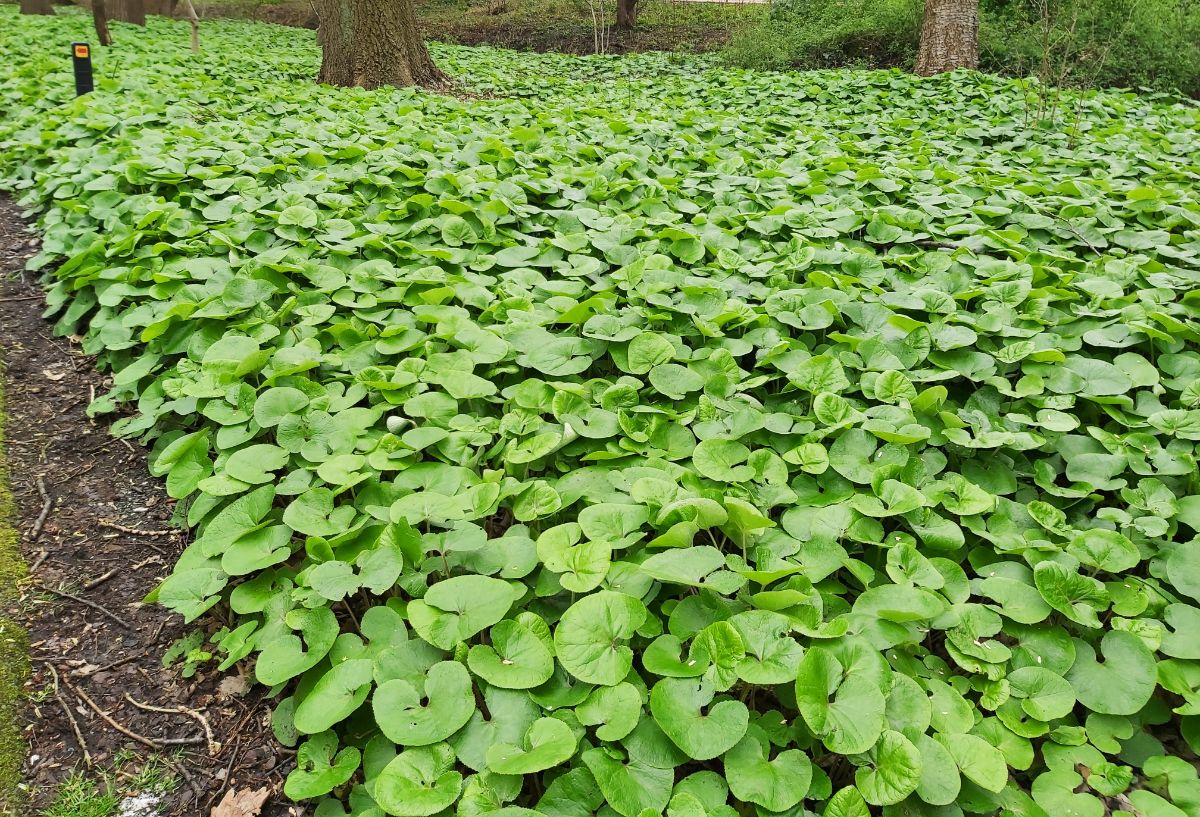
| Scientific Name: | Asarum |
| Plant Type: | Herbaceous Perennial |
| Sun Exposure: | Full sun, partial shade |
Wild ginger is a beautiful green perennial that has no relation to the ginger we eat. This plant grows about 6 to 10 inches tall and can spread up to 24 inches, contingent on which variety you’ve planted in your garden. They are non-invasive and have evergreen heart-shaped leaves. Wild ginger is ideal for planting under trees because they require as much as full shade since they burn easily in the sun.
4. Merry Bells aka Bellwort
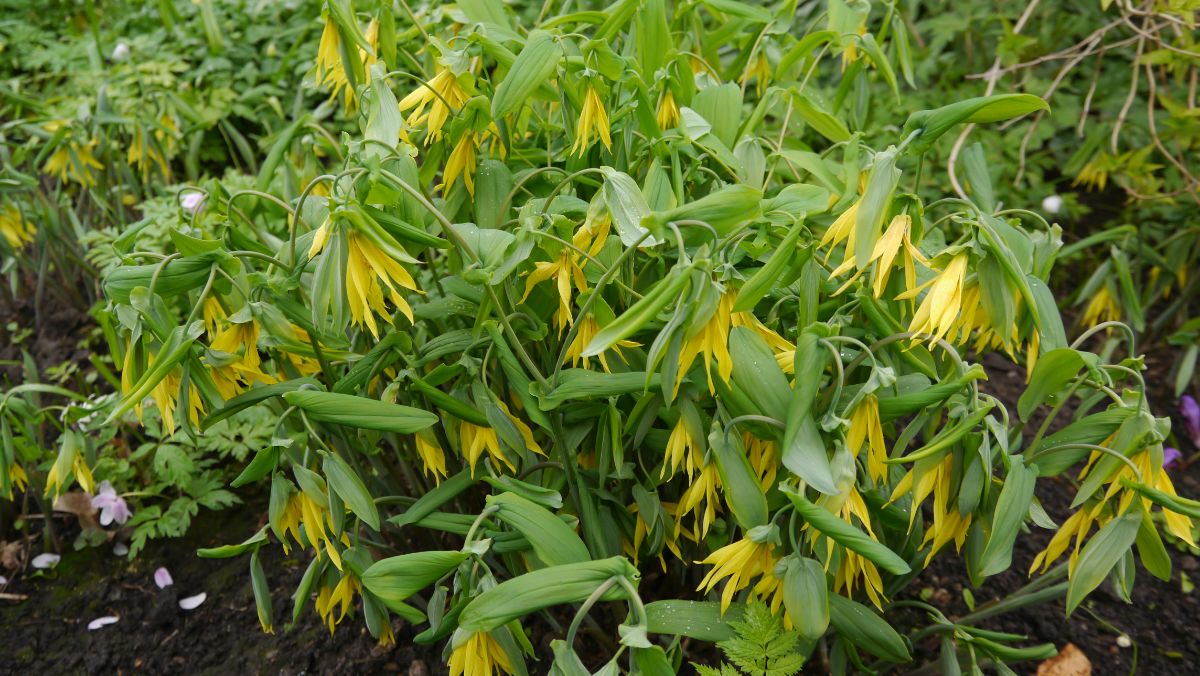
| Scientific Name: | Uvularia grandiflora |
| Plant Type: | Herbaceous Perennial |
| Sun Exposure: | Full shade |
The bellwort plant is a perennial native to eastern North America but thrives in areas like the Pacific Northwest, where the region is moist and has plenty of shade. With that in mind, if you ensure your bellwort plant has a moist, shaded environment to grow in, they’ll grow well and add a pop of color to your garden with their dangling yellow flowers. When it comes to planting bellwort, you’ll want to start with plants from a nursery. Growing them from seeds can be difficult, and harvesting them in the wild means dividing the roots yourself.
5. Shooting Star
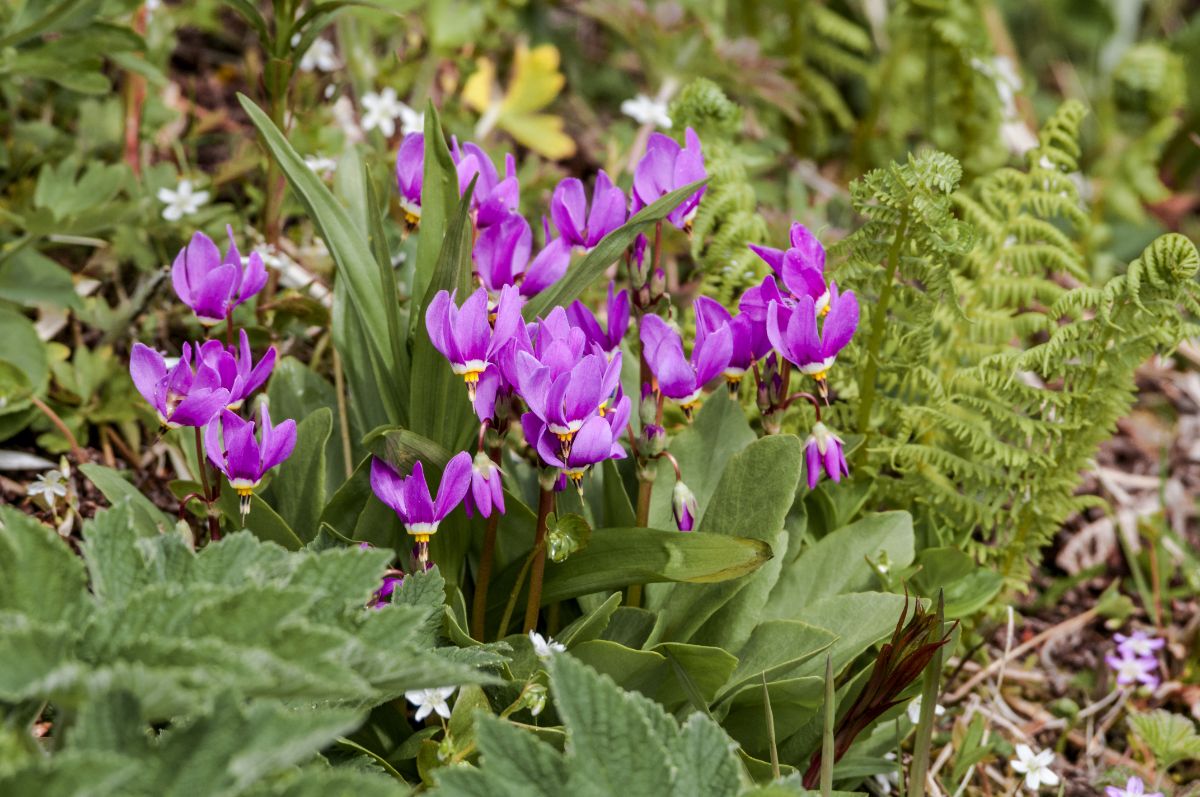
| Scientific Name: | Dodecatheon or Primula meadia |
| Plant Type: | Herbaceous Perennial |
| Sun Exposure: | Partial sun, shade |
Shooting star flowers are herbaceous perennials that include over a dozen species in their genus. They’re from the central and eastern parts of the United States and grow in moist areas. The ideal environment for growing shooting stars is in partial shade; however, they can tolerate sunlight in cooler areas. These beautiful flowers grow in yellow, pink, or soft purple, even in blue-purple, yellow-orange, and pink-red combinations. Shooting stars are perennials and do not produce flowers in their first year.
6. Crocus
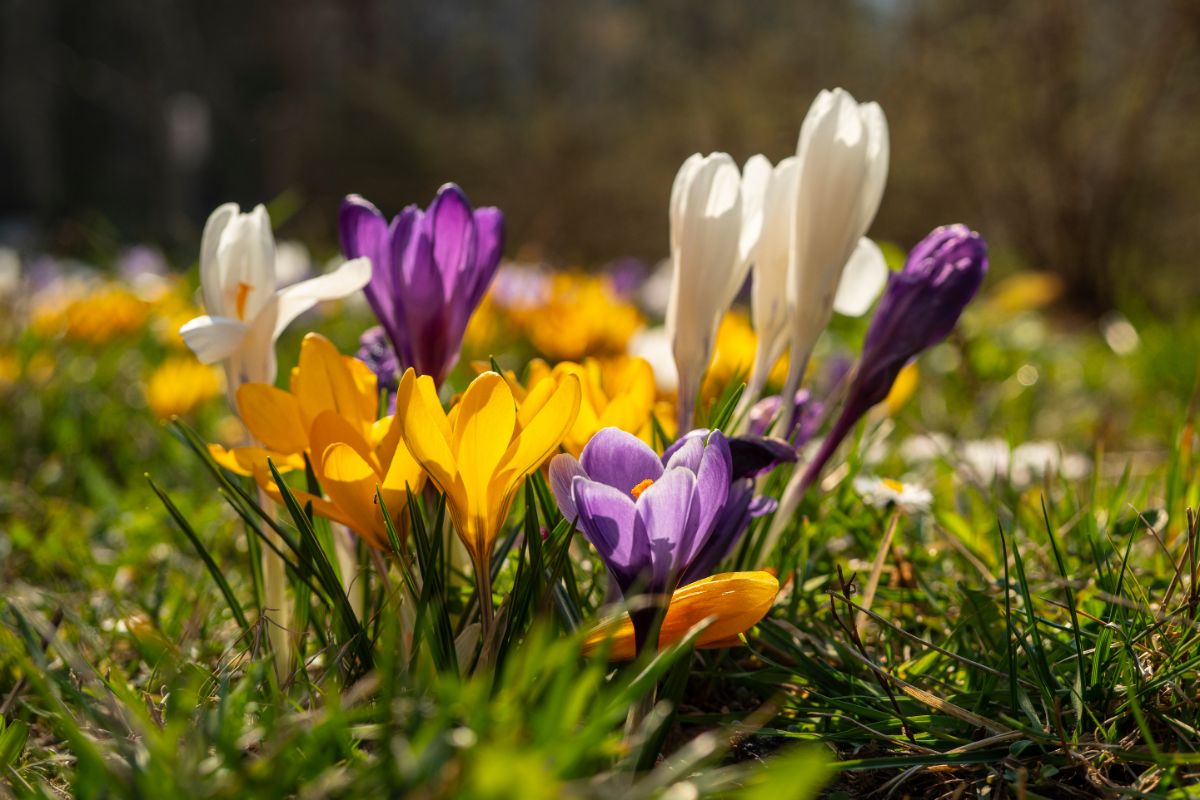
| Scientific Name: | Crocus |
| Plant Type: | Perennial |
| Sun Exposure: | Full sun, partial shade |
Crocuses are perennials that can be grown in groups or give your landscape a more natural look. The crocus plant grows best in colder conditions and will not thrive in hot climates. If you live in the South, you’re in the perfect environment for planting crocuses under your trees.
7. Periwinkle Plant
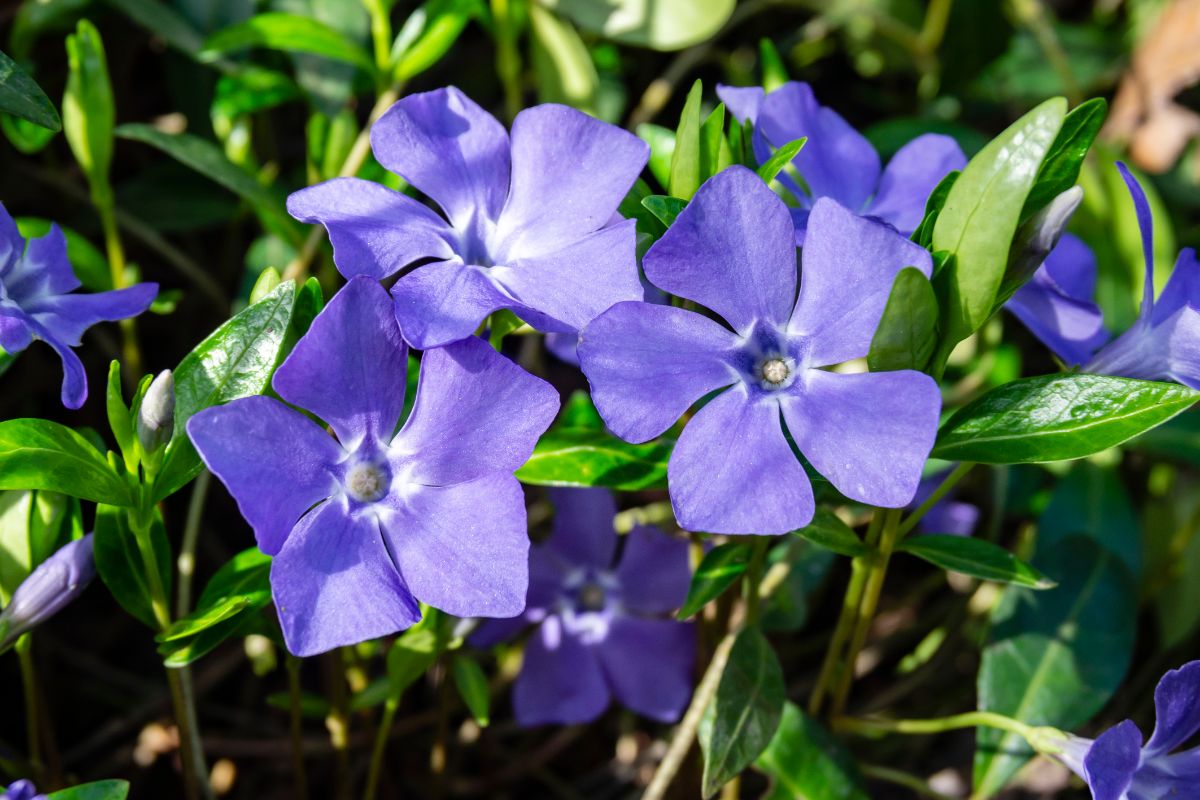
| Scientific Name: | Catharanthus roseus |
| Plant Type: | Herbaceous Perennial |
| Sun Exposure: | Full sun, shade |
Periwinkles also called creeping vinca or creeping myrtle, are often used as ground cover. This perennial plant is drought resistant and doesn’t need much care once established. They grow best in the shade and are excellent at controlling erosion. That said, periwinkle is challenging to remove once it’s established itself. So, make sure that you’re committed before you plant it.
8. Ferns
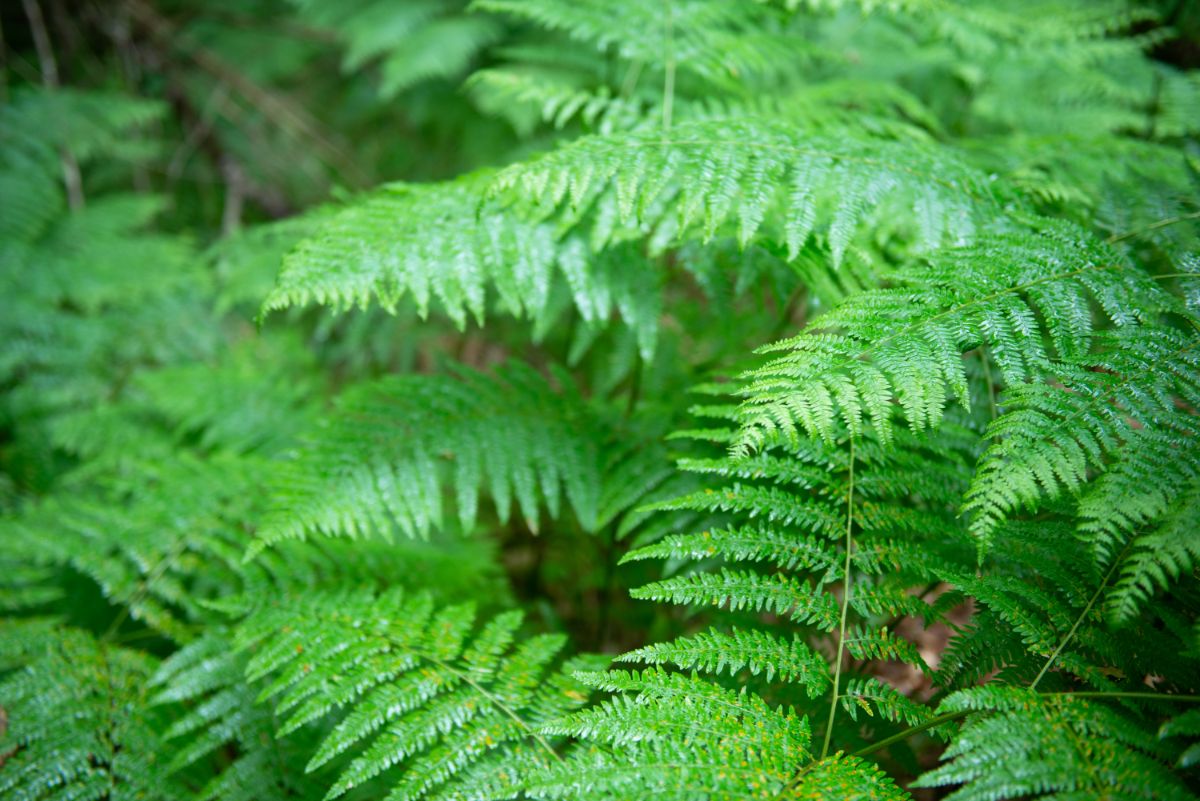
| Scientific Name: | Pteridopsida |
| Plant Type: | Herbaceous Perennial |
| Sun Exposure: | Partial sun, shade |
Ferns have an ancient lineage, dating from 354 million to 417 million years ago! In the United States, ferns can be grown year-round because they’re resilient against cold and heat—understandable considering how long these beautiful plants have been around! Their hardiness makes them an excellent choice for planting in the shade. Because of how easy it is to grow them, this perennial plant requires minimal effort and attention.
9. Wild Violets
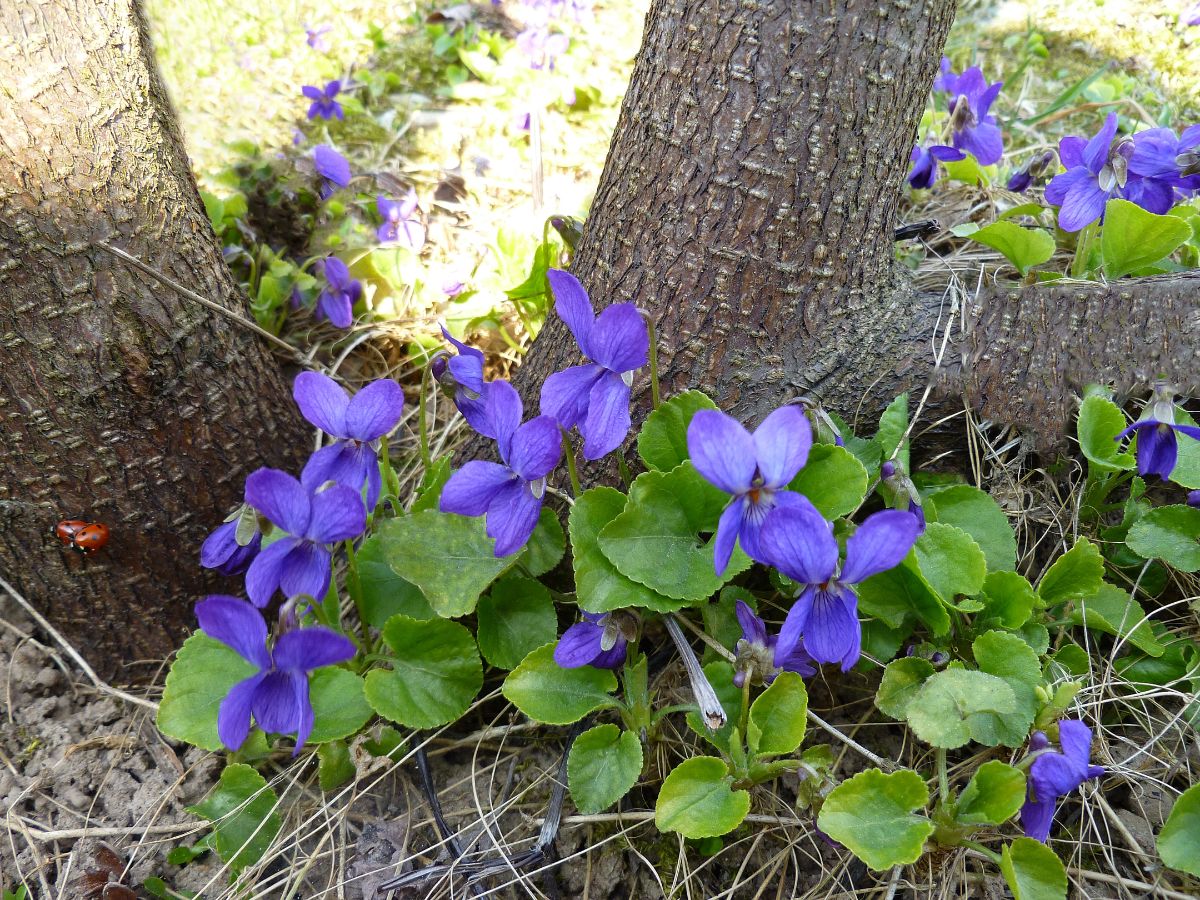
| Scientific Name: | Viola sororia |
| Plant Type: | Herbaceous Perennial |
| Sun Exposure: | Partial sun, partial shade |
Violet flowers have purple-blue flowers—some white or yellow varieties—and heart-shaped leaves. Wild violets are perfect accents for trees, and they grow well in lightly shaded areas. Other than watering them after planting, you don’t have to worry too much about taking care of them; wild violets take care of themselves! Wild violets are winter annual plants.
10. Ajuga Plants
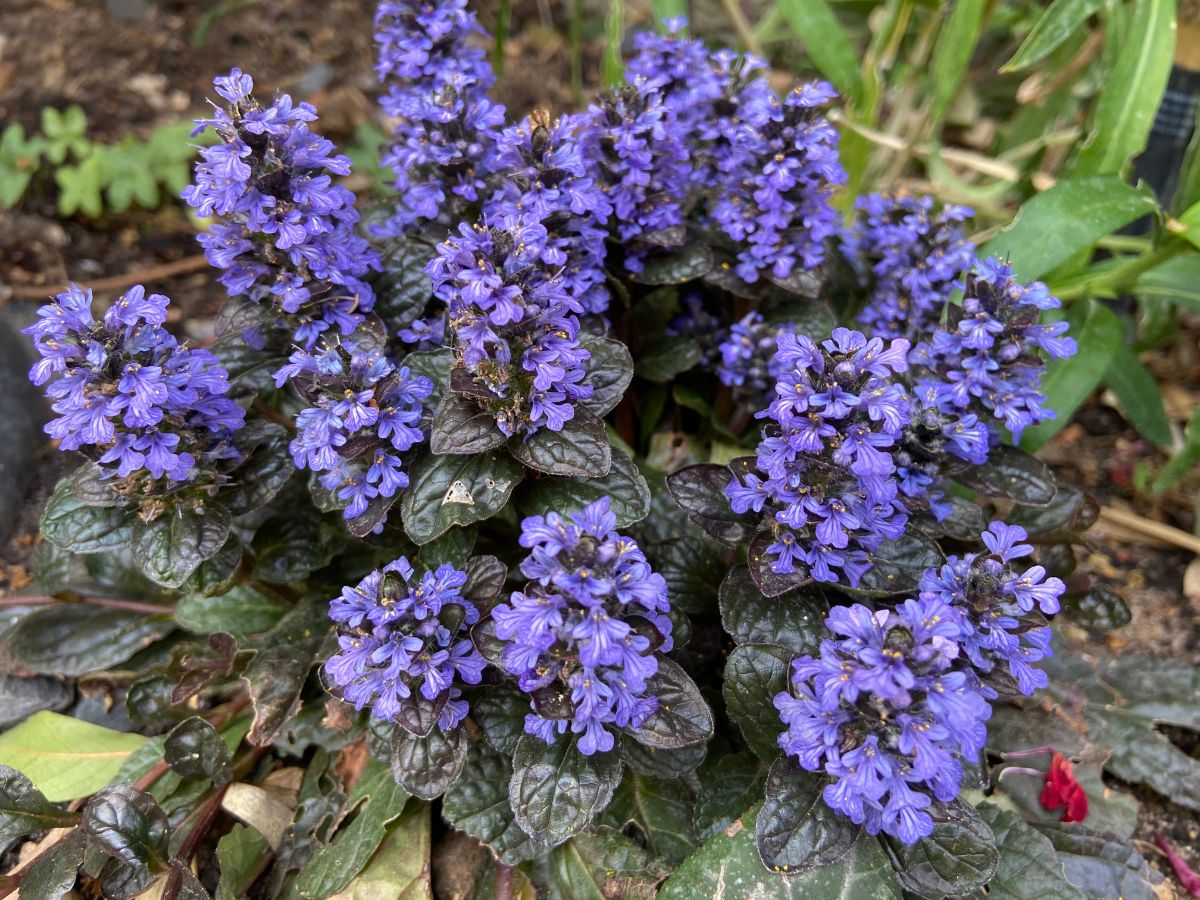
| Scientific Name: | Ajuga reptans |
| Plant Type: | Herbaceous Perennial |
| Sun Exposure: | Full sun, partial shade |
Ajuga plants, also known as bugleweed and carpet bugle, are creeping evergreen plants that are perfect for adding color to a garden while also smothering pesky weeds! This perennial flower usually comes in blue or purple but can also be found in white! This plant is part of the mint family and acts as a ground cover, so without proper maintenance, it can easily overgrow; one way to solve this problem is by enclosing them with edging.
11. Impatiens
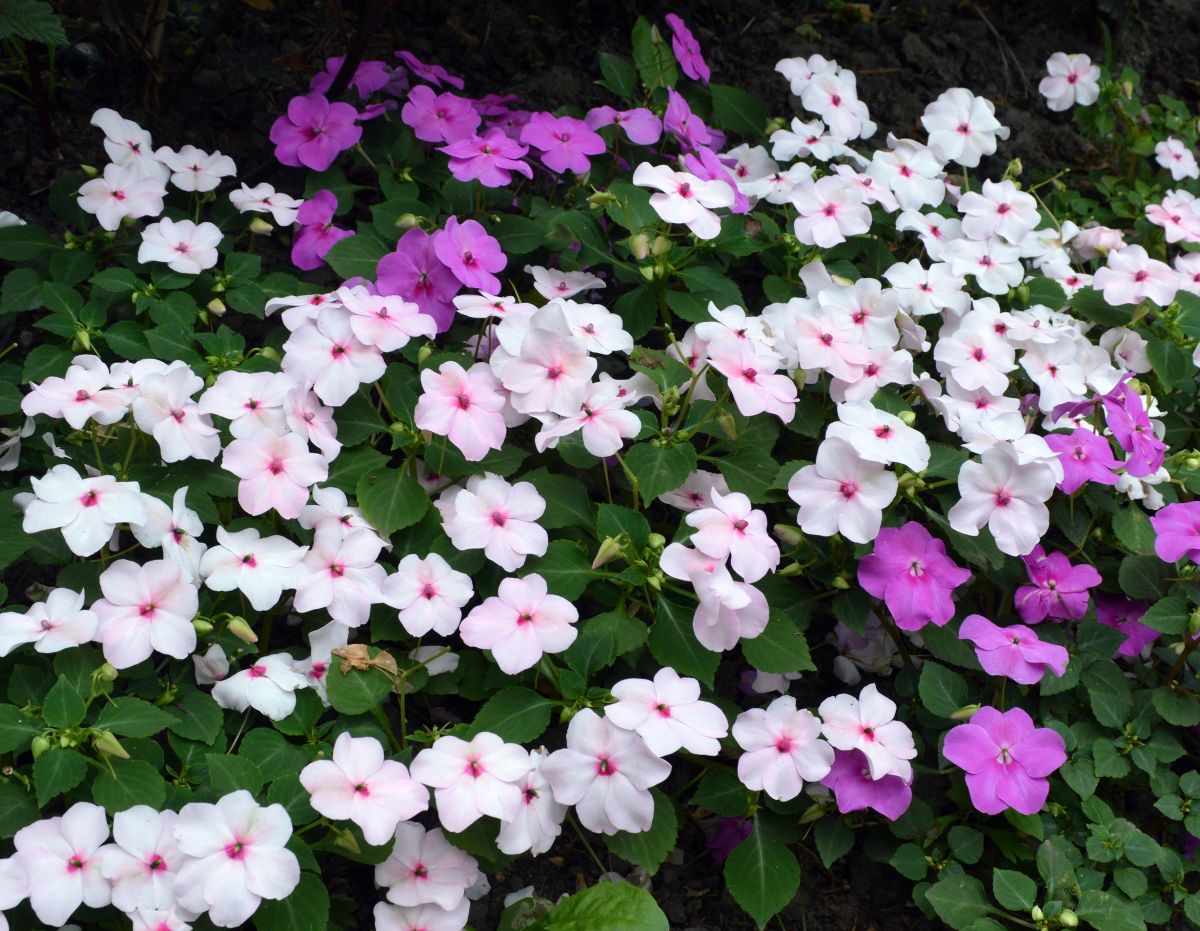
| Scientific Name: | Impatiens |
| Plant Type: | Annual, Tender Perennial |
| Sun Exposure: | Partial shade |
Impatiens, also known as touch-me-nots, are colorful flowers best grown from established plants purchased at a nursery or garden center. Alternatively, you can also propagate them from seeds or cuttings. These flowers do best in the shade and are very sensitive to watering. If they are dehydrated, they’ll wilt and, eventually, die. Standard colors for impatiens are white, red, pink, violet, coral, purple, and yellow. Unlike many plants on this list, impatiens are annual flowers!
12. Primrose
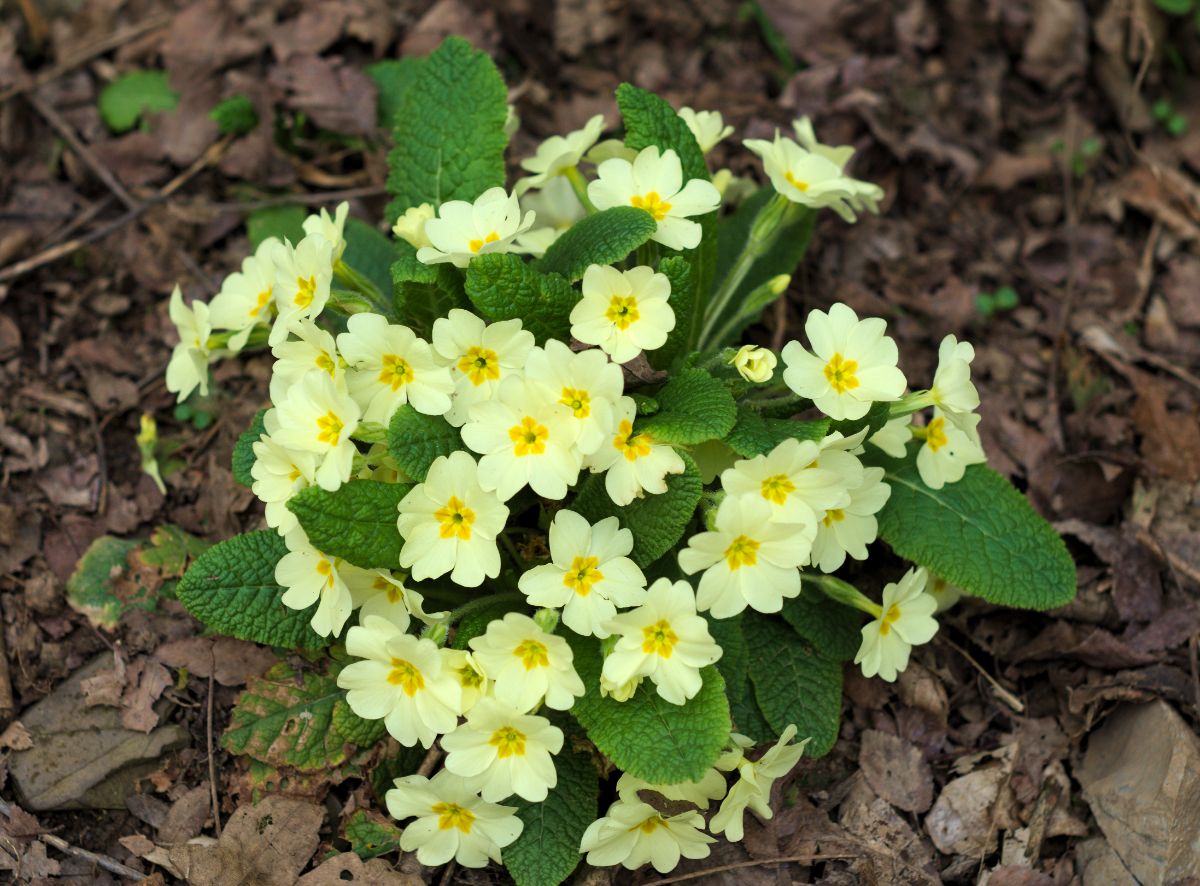
| Scientific Name: | Primula vulgaris |
| Plant Type: | Herbaceous Perennial |
| Sun Exposure: | Full sun, partial shade |
Primroses are perennials that come in various colors, from white to yellow to red and even blue! These flowers prefer moist conditions, but other than that, they’re relatively easy to grow! After planting, it’s ideal to add a layer of mulch around the plant to help it stay moist. Although they favor damp environments, they must receive proper drainage as well, or they’ll experience root rot.
13. Siberian Squill
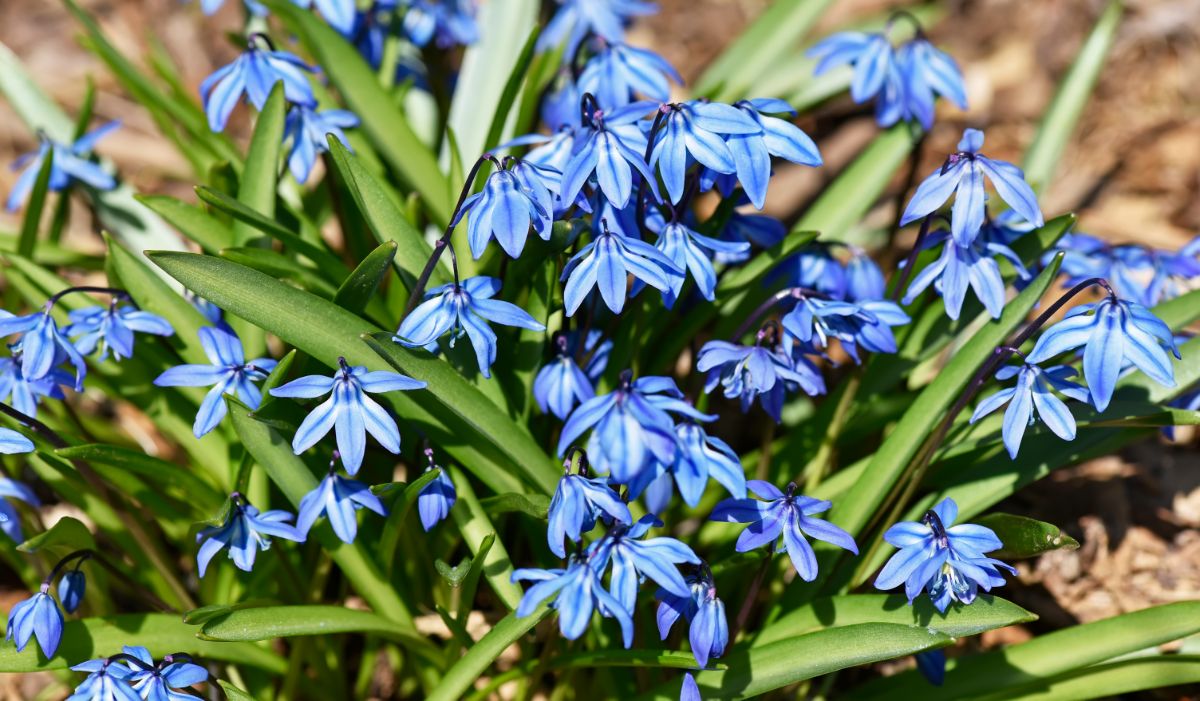
| Scientific Name: | Scilla siberica |
| Plant Type: | Perennial |
| Sun Exposure: | Full sun, partial shade |
The Siberian squill plant is resilient, often thriving in cold environments. These perennials are very hardy; however, they still need proper drainage to prevent root rot. If you use this plant to line your tree, be aware that they grow best under deciduous trees, such as oak or maple.
14. Lamium
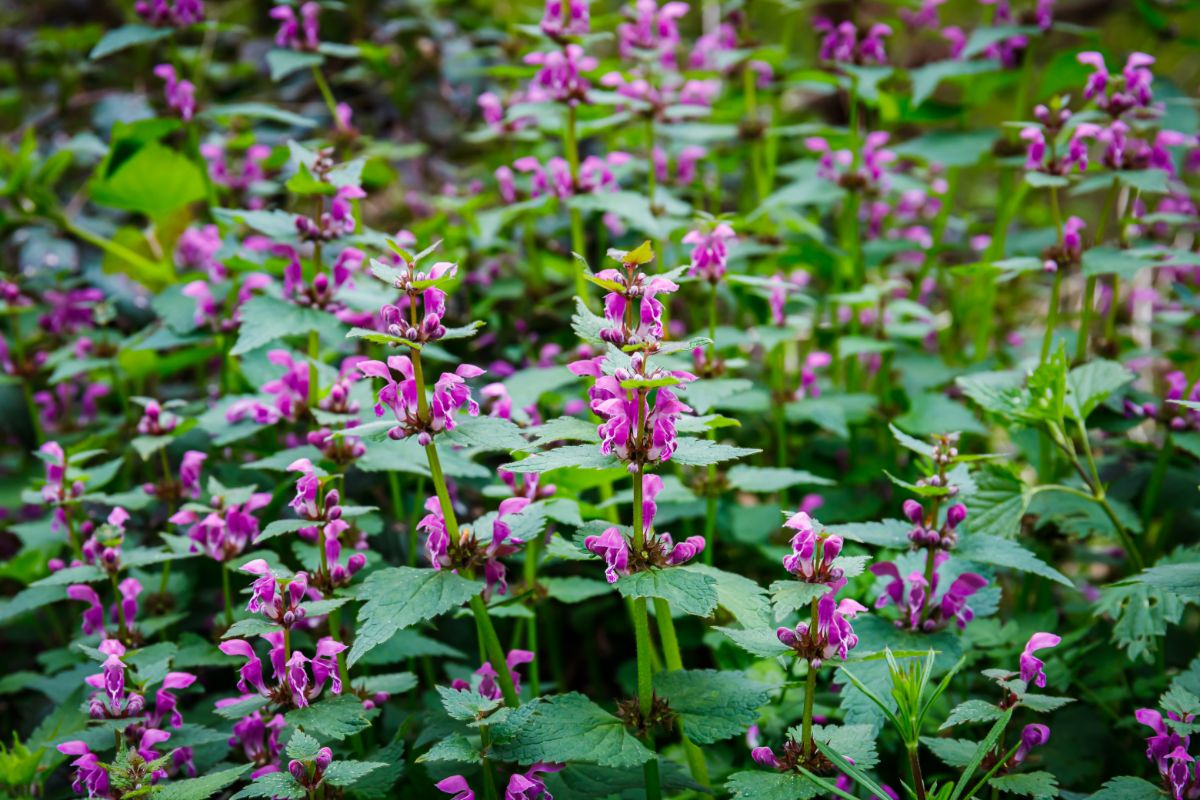
| Scientific Name: | Lamium maculatum |
| Plant Type: | Herbaceous Perennial |
| Sun Exposure: | Full to partial shade |
Lamium, sometimes called dead nettle, are perennials with beautiful silvery-green leaves and pink, purple, yellow, or white flowers. They don’t have a particular preference for soil, but like the cranesbill, this plant grows best in slightly moist and humus-rich soils.
15. Abelia

| Scientific Name: | Abeliophyllum distichum |
| Plant Type: | Evergreen |
| Sun Exposure: | Full sun, partial shade |
Abelia has oval, pointed leaves that grow up to two inches long. Its foliage is green or yellow, with pops of rose, orange, bronze, or burgundy. Their sweet-smelling flowers attract pollinators, and because they grow well in the shade, they’re ideal for planting under large trees. The abelia plant is a perennial that can grow in different soil types but prefers fertile soil that includes organic material.
16. Cranesbill
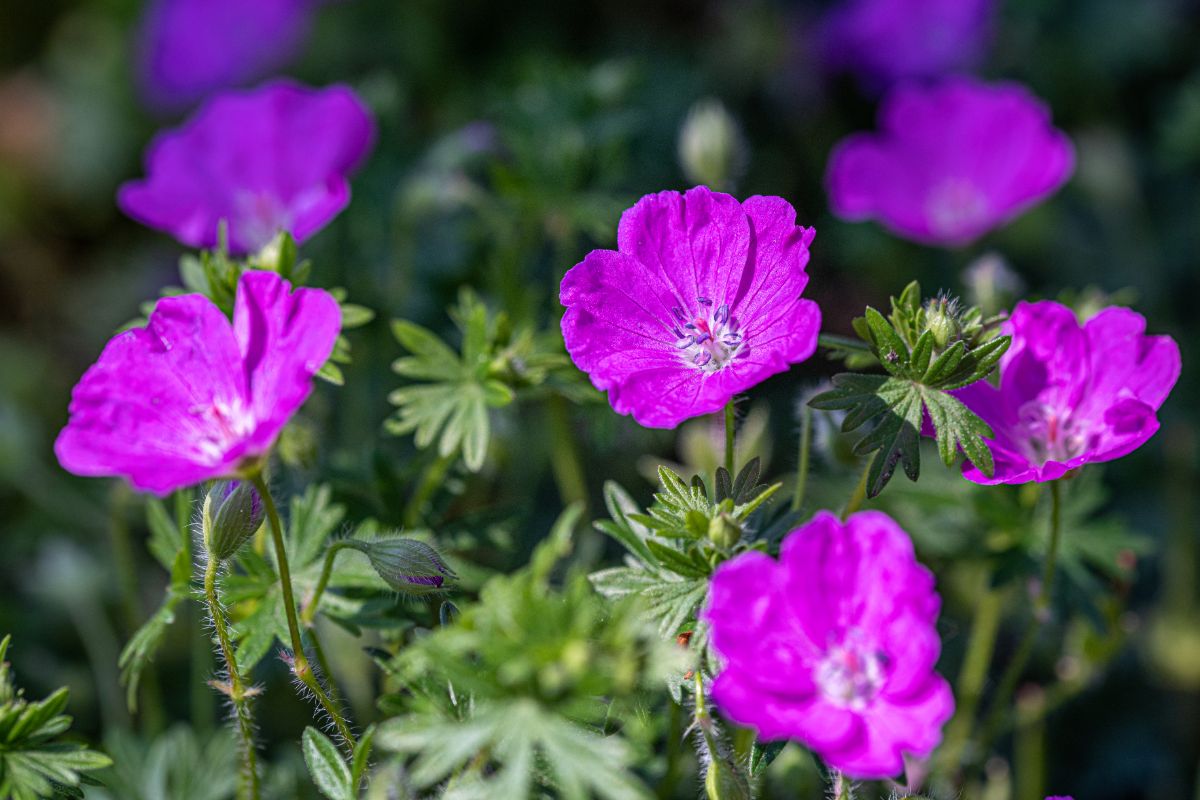
| Scientific Name: | Geranium carolinianum |
| Plant Type: | Perennial |
| Sun Exposure: | Partial shade |
This beautiful plant is very hardy and grows flowers that are either pink or purple. It’s also called a perennial geranium and is perfect for lining your tree, mainly because they’re resistant to deers and bunnies. Despite deers and bunnies having an aversion to cranesbill, they are generally considered non-toxic for pets. It grows best in humus-rich soil that is moist.
17. Tiarella

| Scientific Name: | Tiarella |
| Plant Type: | Herbaceous Shade Perennial |
| Sun Exposure: | Moderate to full shade |
This beautiful perennial plant isn’t commonly used in gardens, although it should be! It grows well in moist environments and grows in the wild in forests and coves. Although the tiarella flowers come in various colors, including greenish-white and coral, their color may fade if grown in the shade. Tiarella is also known as false miterwart and foamflower.
18. Heucherella

| Scientific Name: | x Heucherella |
| Plant Type: | Herbaceous Perennial |
| Sun Exposure: | Partial sunlight, partial shade |
If you love seeing butterflies and hummingbirds in your garden, the heucharella plant, also known as foamy bells, is what you need in your garden! This perennial is a cross between a heuchera and tiarella plant, and it’s a very hardy plant as it’s resistant to rust disease and tolerant of extreme temperatures.
19. Liriope
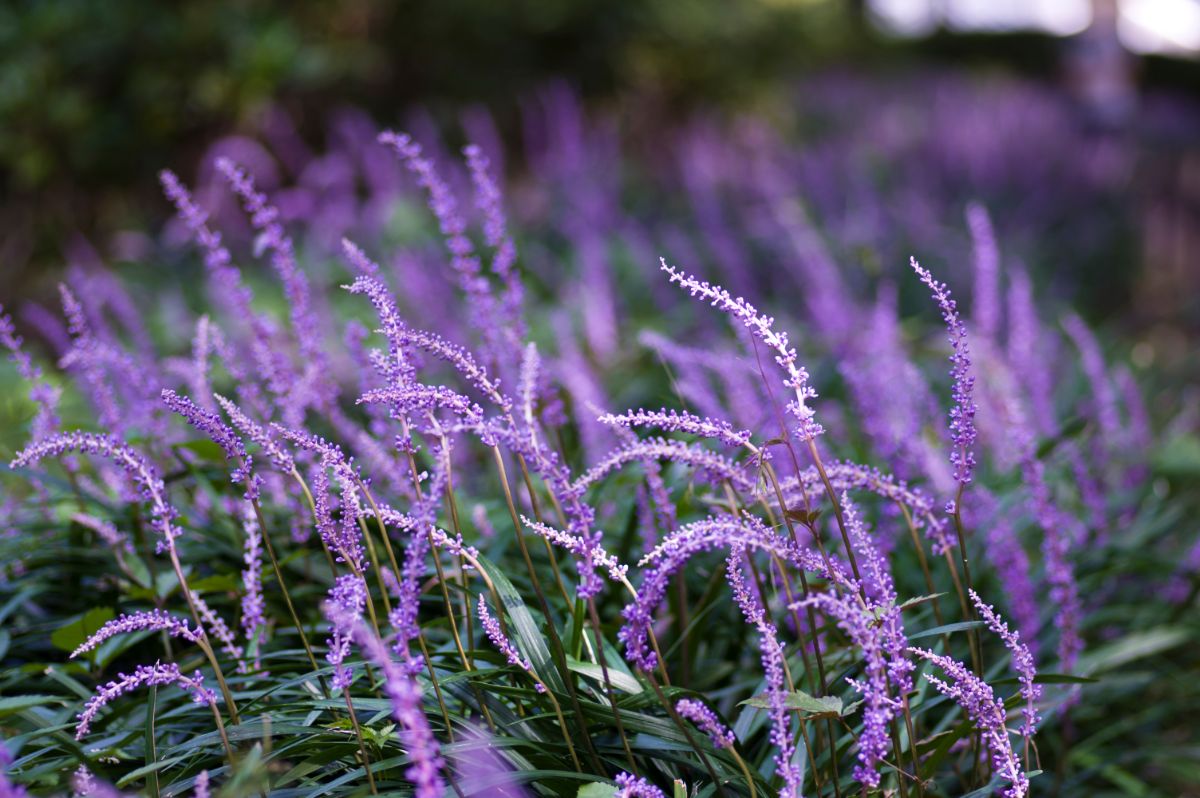
| Scientific Name: | Liriope muscari |
| Plant Type: | Herbaceous Flowering Perennial |
| Sun Exposure: | Full sun, partial shade |
Liriope is an evergreen plant that grows very fast and is used as a ground cover. Because they grow well in deep shade, they do very well when planted under trees. It can endure heat and salt spray, but its soil needs to be well-drained.
20. Lenten Rose
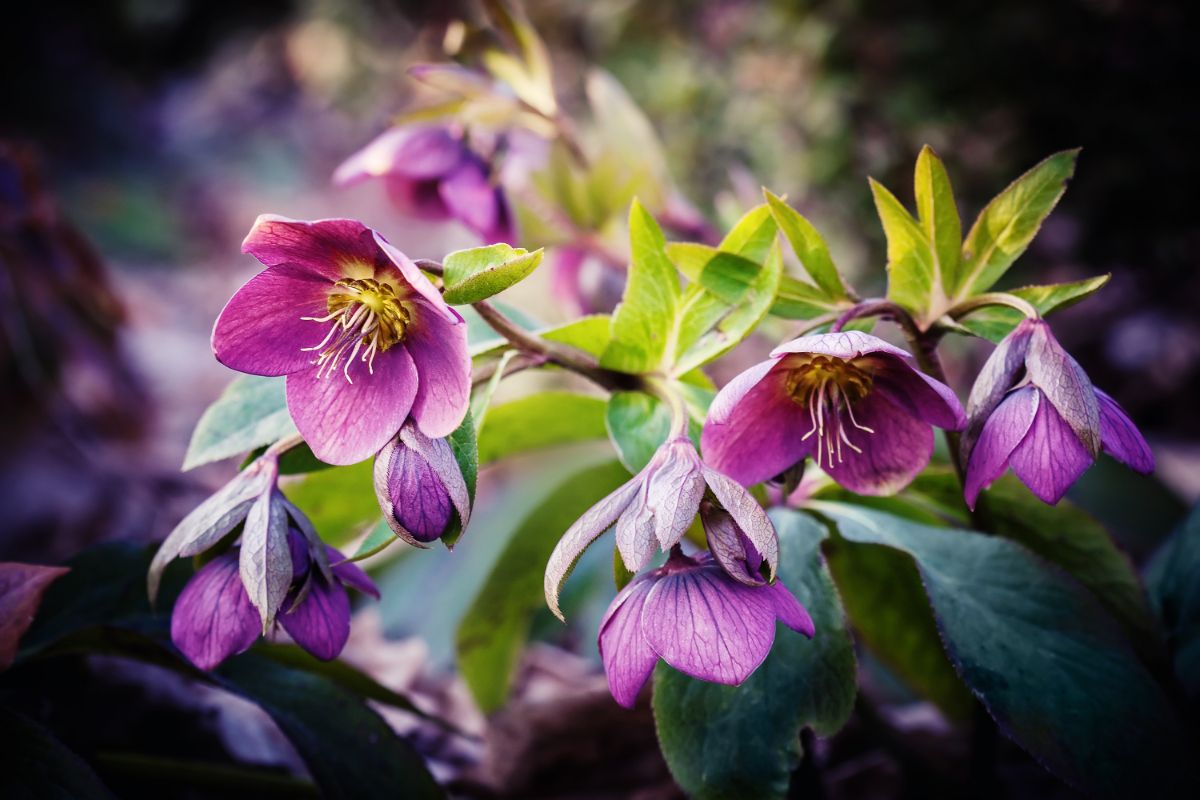
| Scientific Name: | Helleborus orientalis |
| Plant Type: | Herbaceous Perennial |
| Sun Exposure: | Partial to full sun |
Lenten rose, also called hellebore, is a drought-tolerant perennial; however, it needs to be watered and cared for to get established. There are numerous varieties of colors; however, traditionally, its blooms are white, pink, and light purple.
If you add this lovely plant to your garden, please be aware that it is toxic to humans and animals.
21. Brunnera
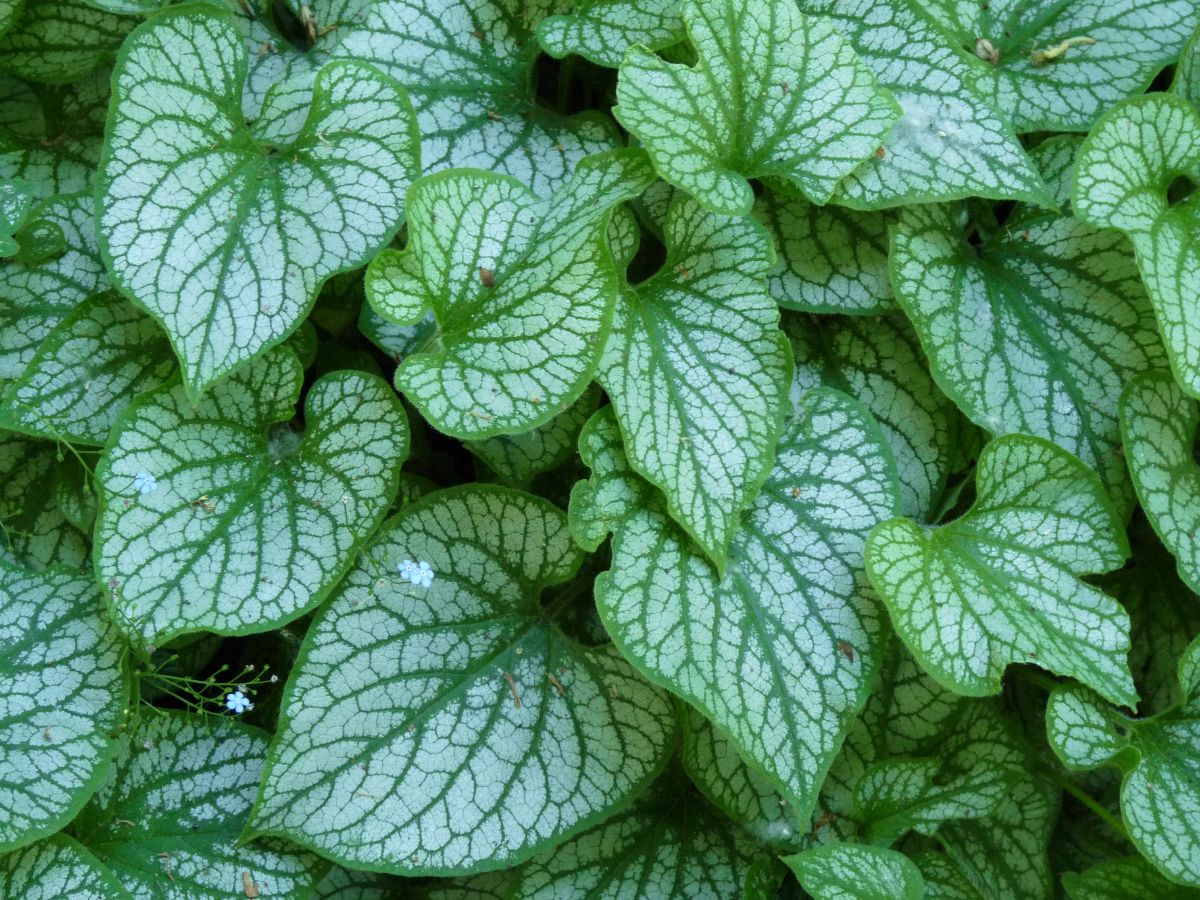
| Scientific Name: | Brunnera |
| Plant Type: | Herbaceous Perennial |
| Sun Exposure: | Full to partial shade |
The brunnera plant is eye-catching with its heart-shaped leaves and lovely blue-purple flowers. While these perennials aren’t usually seen planted under trees, they are a good fit for under-the-tree gardens because they enjoy full shade and moist soils.
22. Pachysandra
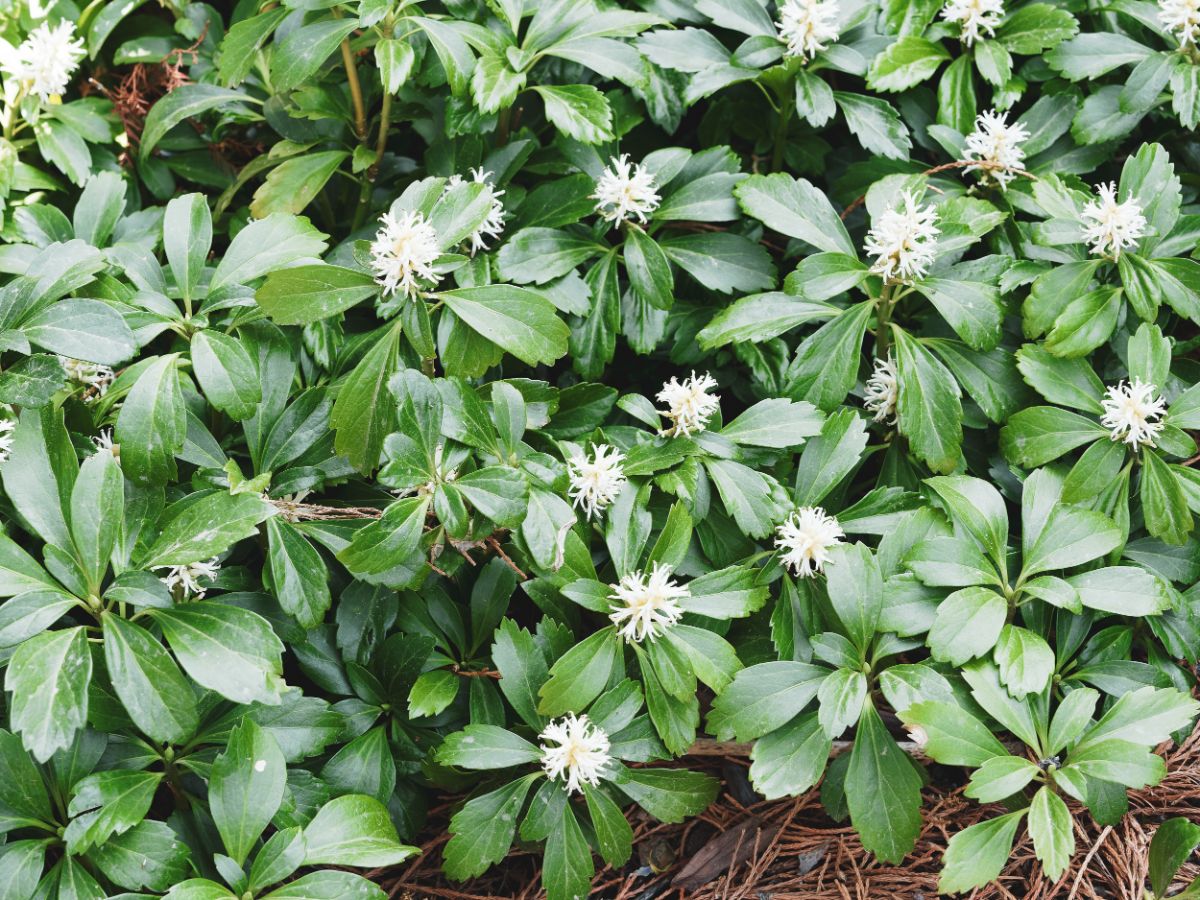
| Scientific Name: | Pachysandra terminalis |
| Plant Type: | Evergreen Herbaceous Perennial |
| Sun Exposure: | Full shade |
Pachysandra is an evergreen ground cover that grows well under trees. Its green leaves are stunning to look at year-round, and as a bonus, pretty white flowers bloom in the spring! With that said, it’s important to note that this plant requires regular maintenance, or it can take over nearby plants and kill them.
23. Barren Strawberry
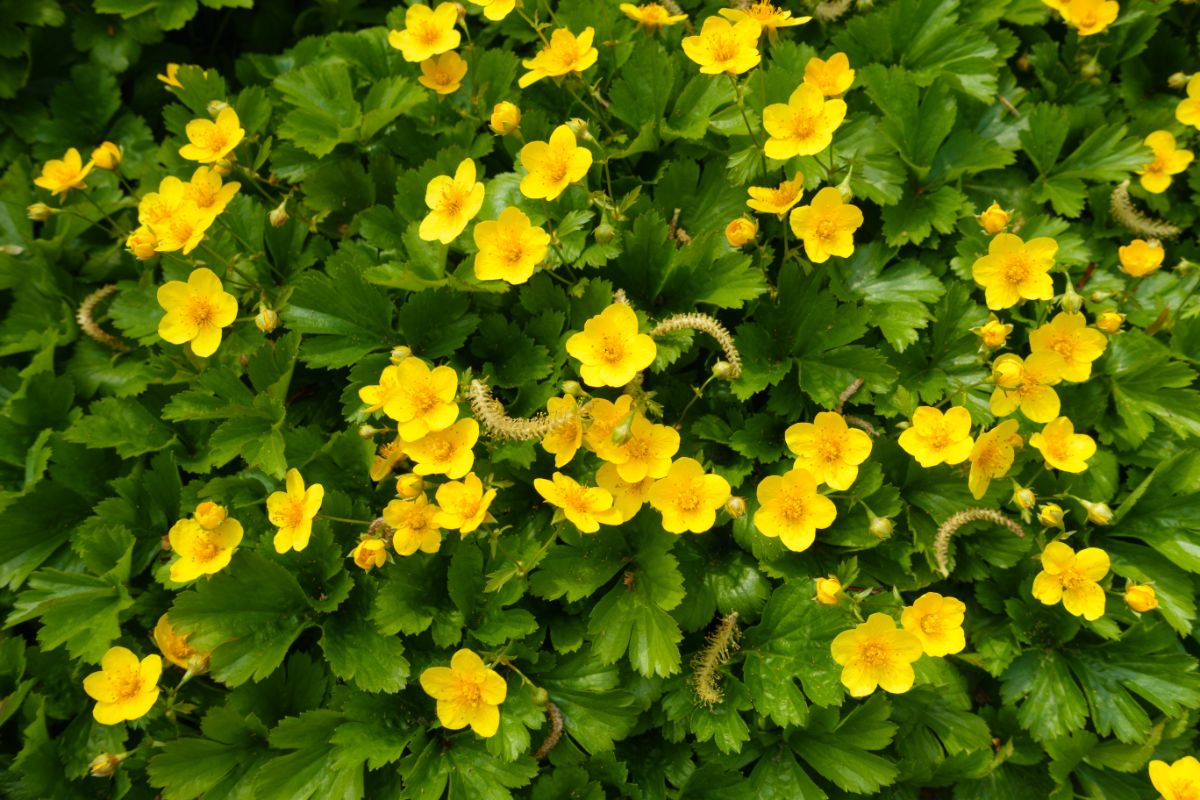
| Scientific Name: | Waldsteinia fragarioides |
| Plant Type: | Herbaceous Perennial |
| Sun Exposure: | Full sun, partial shade |
Barren strawberries are perennial plants that look like regular strawberry plants; however, it doesn’t grow fruit, hence “barren” in their name. This plant is sometimes also called the dry strawberry or yellow strawberry plant. In temperate zones, barren strawberries will remain evergreen. They grow well in partial shade and are low-maintenance, aside from needing to be watered consistently.
24. Stonecrop
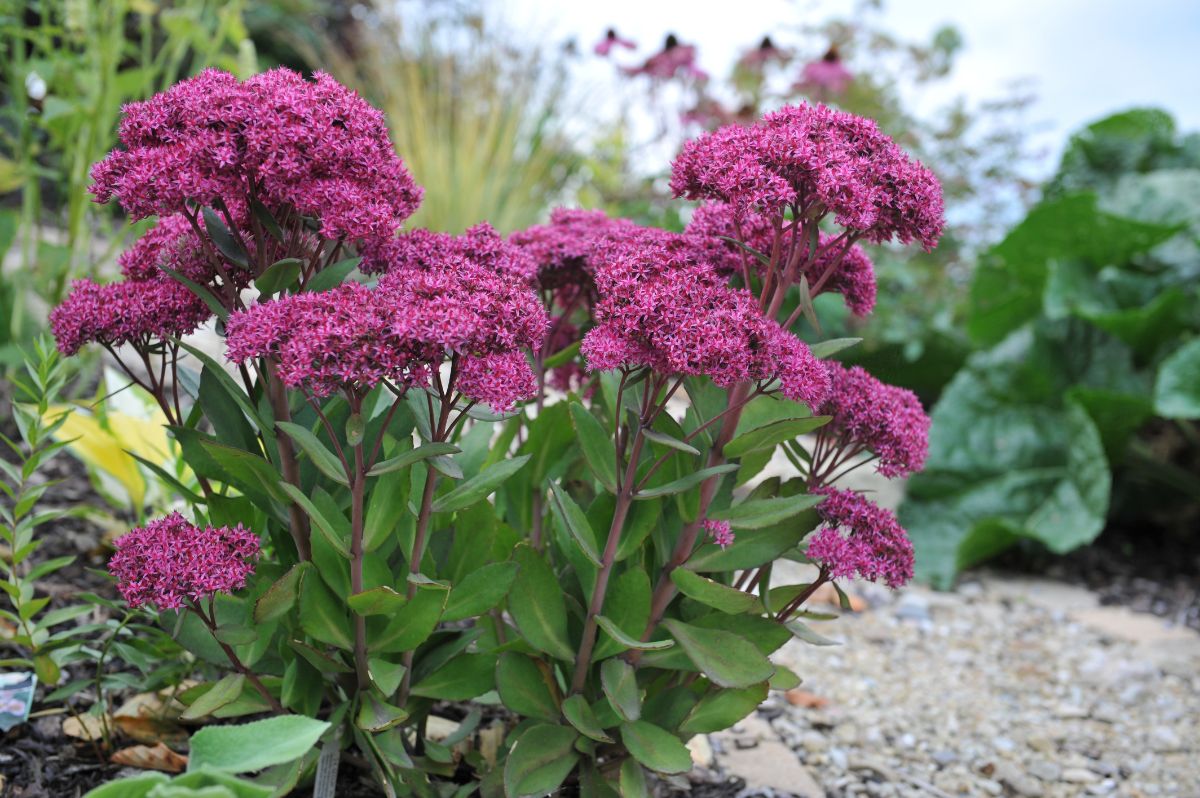
| Scientific Name: | Sedum |
| Plant Type: | Succulent Herbaceous Perennial |
| Sun Exposure: | Full sun, partial shade |
The stonecrop plant is a hardy perennial plant that is drought-tolerant. They are succulents that grow low to the ground and have flowers that bees, moths, and butterflies love! The stonecrop flower may bloom as late as the early part of winter. This plant isn’t susceptible to disease and isn’t known to have any issues with pests.
25. Yarrow
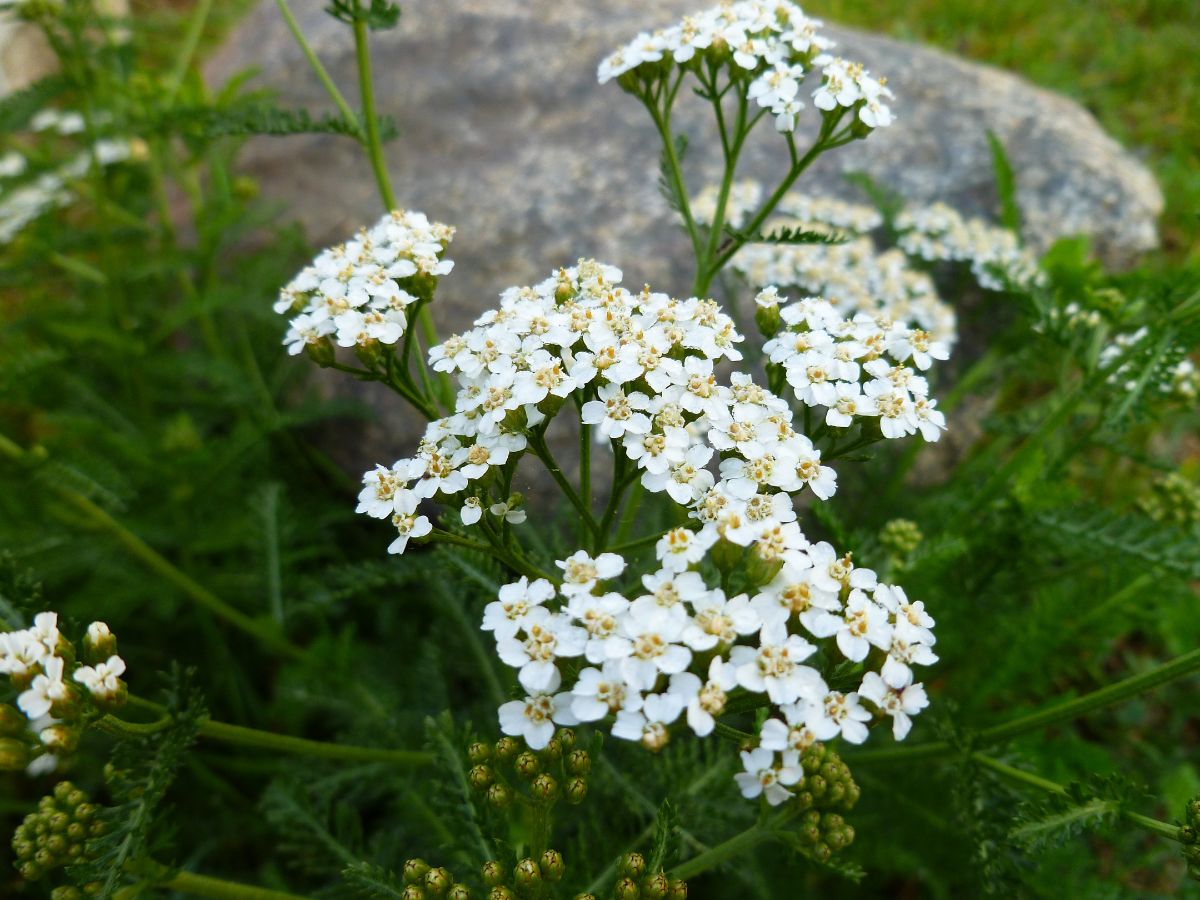
| Scientific Name: | Achillea millefolium |
| Plant Type: | Herbaceous Flowering Perennial |
| Sun Exposure: | Full sun, partial shade |
Yarrow is a flowering perennial and needs to be planted between 12” to 24” apart for best growth. These plants are low-maintenance and don’t require much attention, except during extreme drought. As a bonus, yarrow is commonly used in homeopathic medicine to treat minor wounds and cramped muscles and reduce fever. However, you should consult your regular physician before doing so.
FAQs
Take a look at some of the most common questions regarding plants to grow under trees:
When planting under your tree, it’s almost too easy to make it look curated and unnatural. The best way to make plants look like they intended to be under your tree is to plant them as close to the trunk as possible.
Many plants need moist environments to grow appropriately. Happily, some of the plants on this list, such as the stonecrop or lenten rose, are drought-tolerant. If you live in a dry area, choose your plants accordingly and water them conscientiously because tree roots will absorb any water they can find.
Adding compost, mulch, or fertilizer to your garden creates a moisture-rich environment with necessary nutrients that help plants flourish. It’s enough to do this step when planting and then again around early spring when your plants are in bloom.
Final Thoughts
Adding ground cover around your trees takes a little extra effort, but the payoff is worth your time. Whether you choose greens or flowers that bloom in multiple colors, you’ll love seeing the lush, fullness of the garden you worked hard to cultivate.

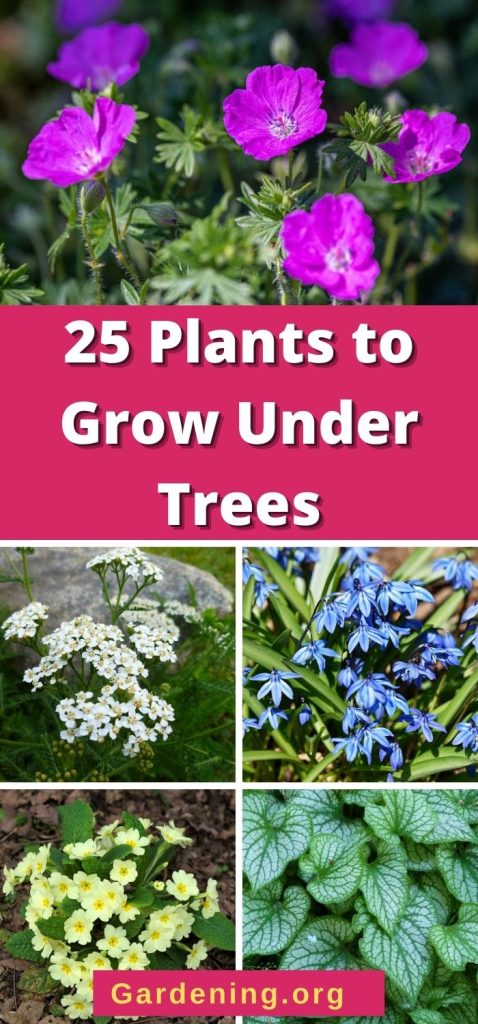

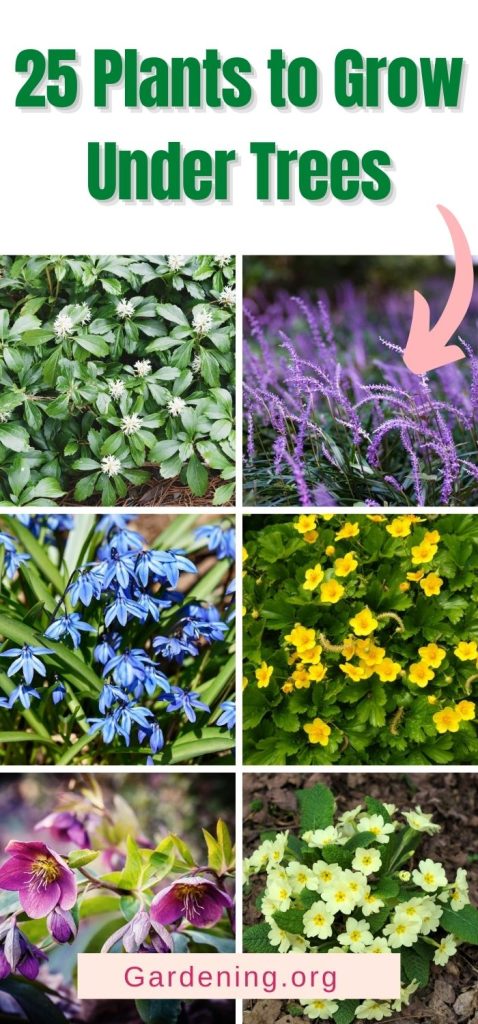
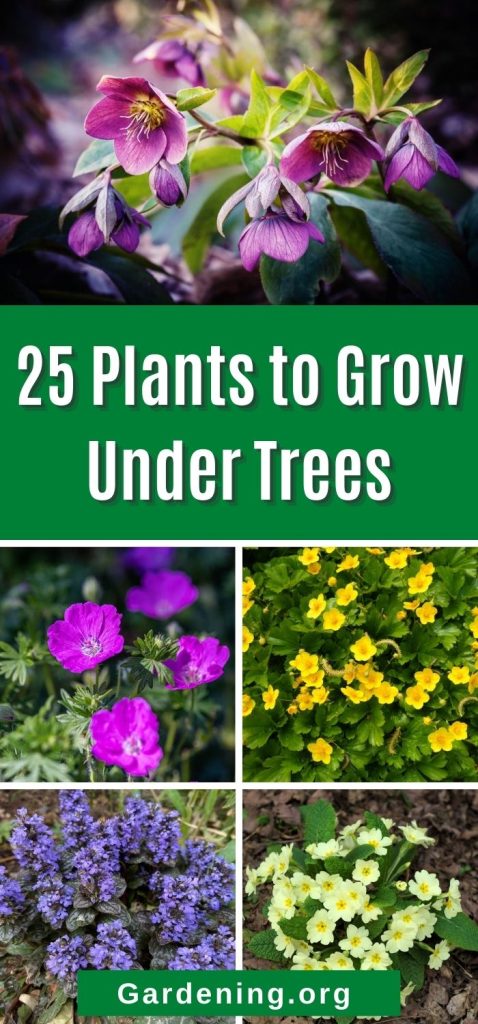

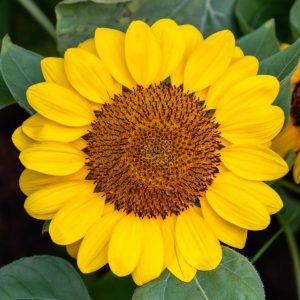
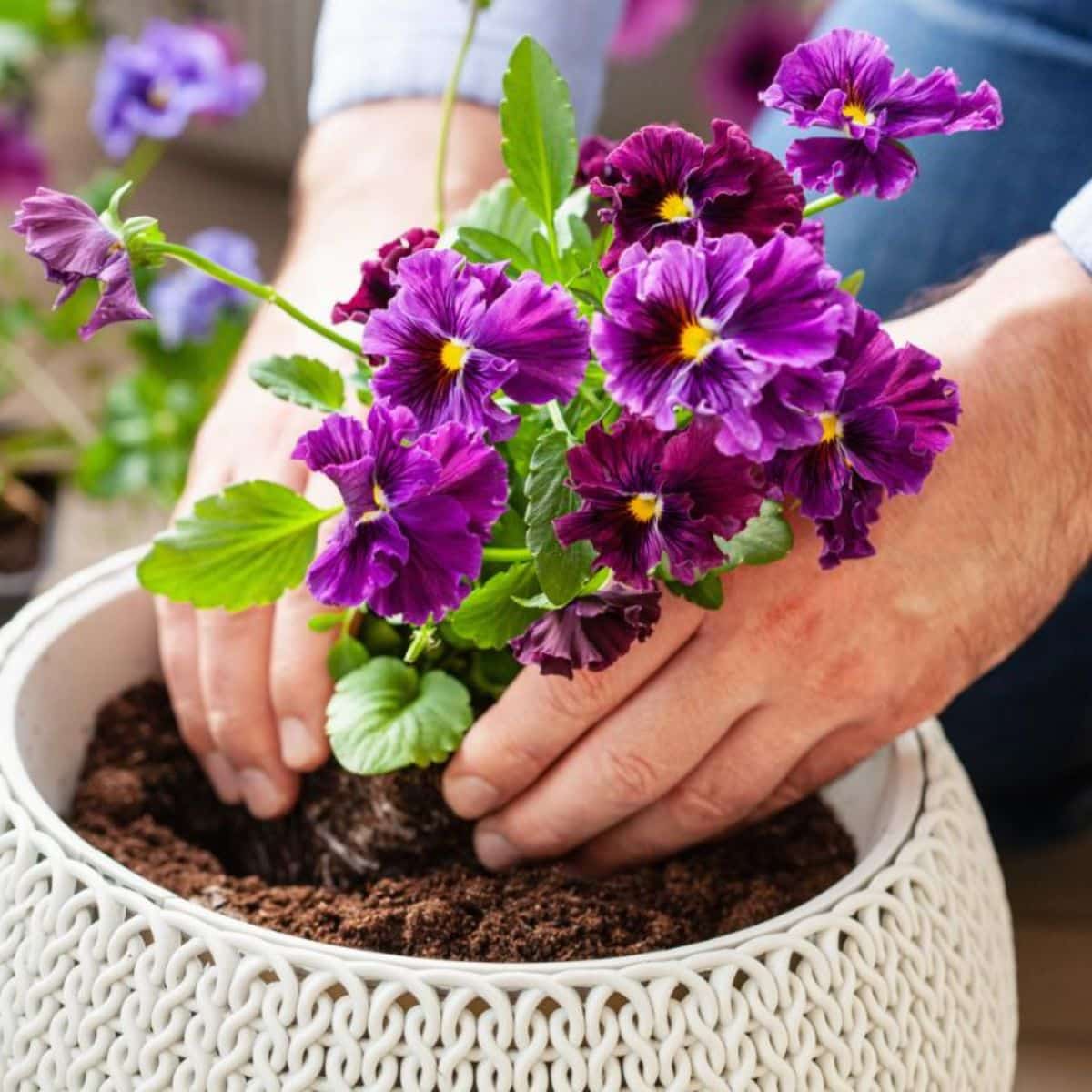
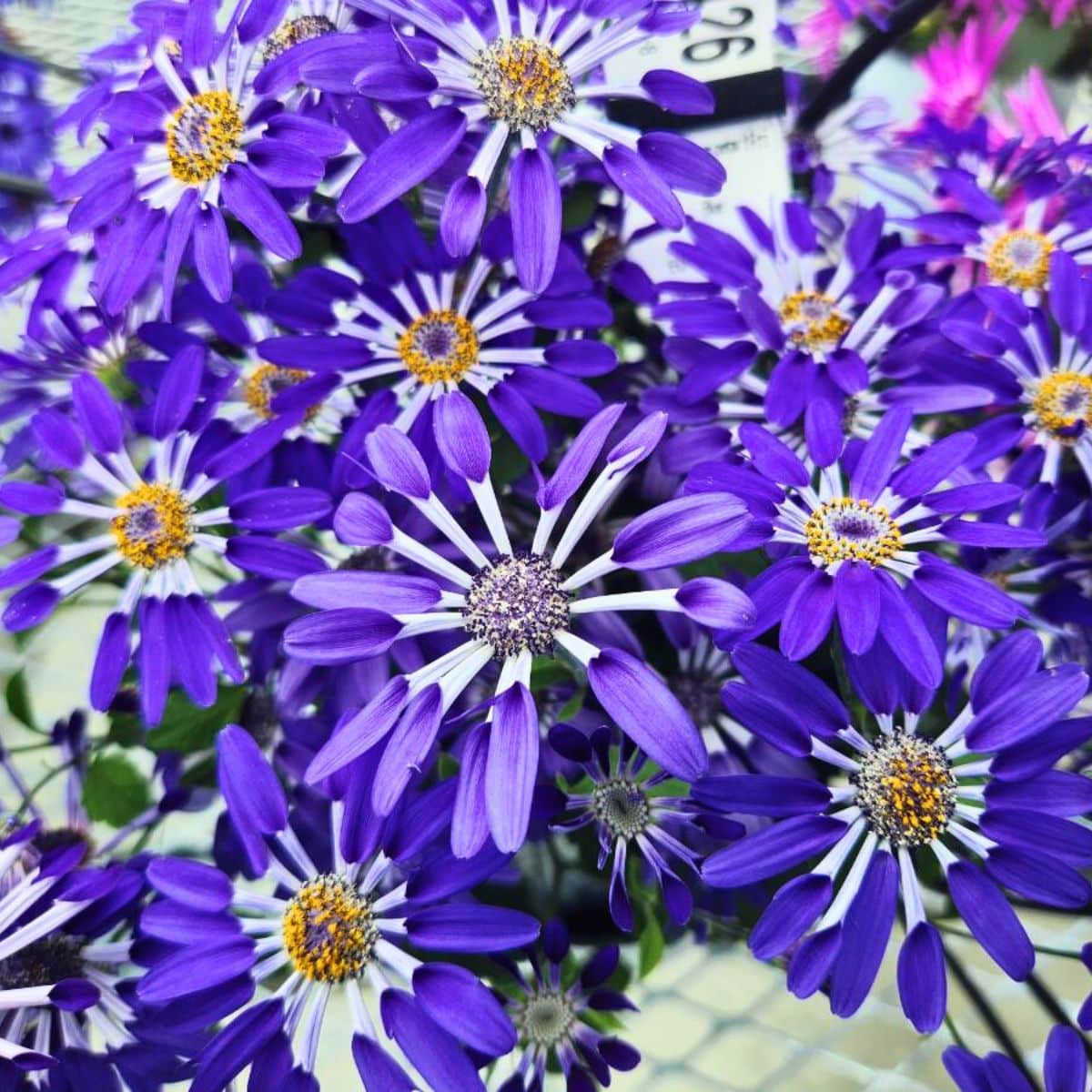
Dorothy leggett
I think all the plants are beautiful I'm gonna give some of them a try thank you all for showing them
edward petty
Loved reading this.Need to know a good supplier